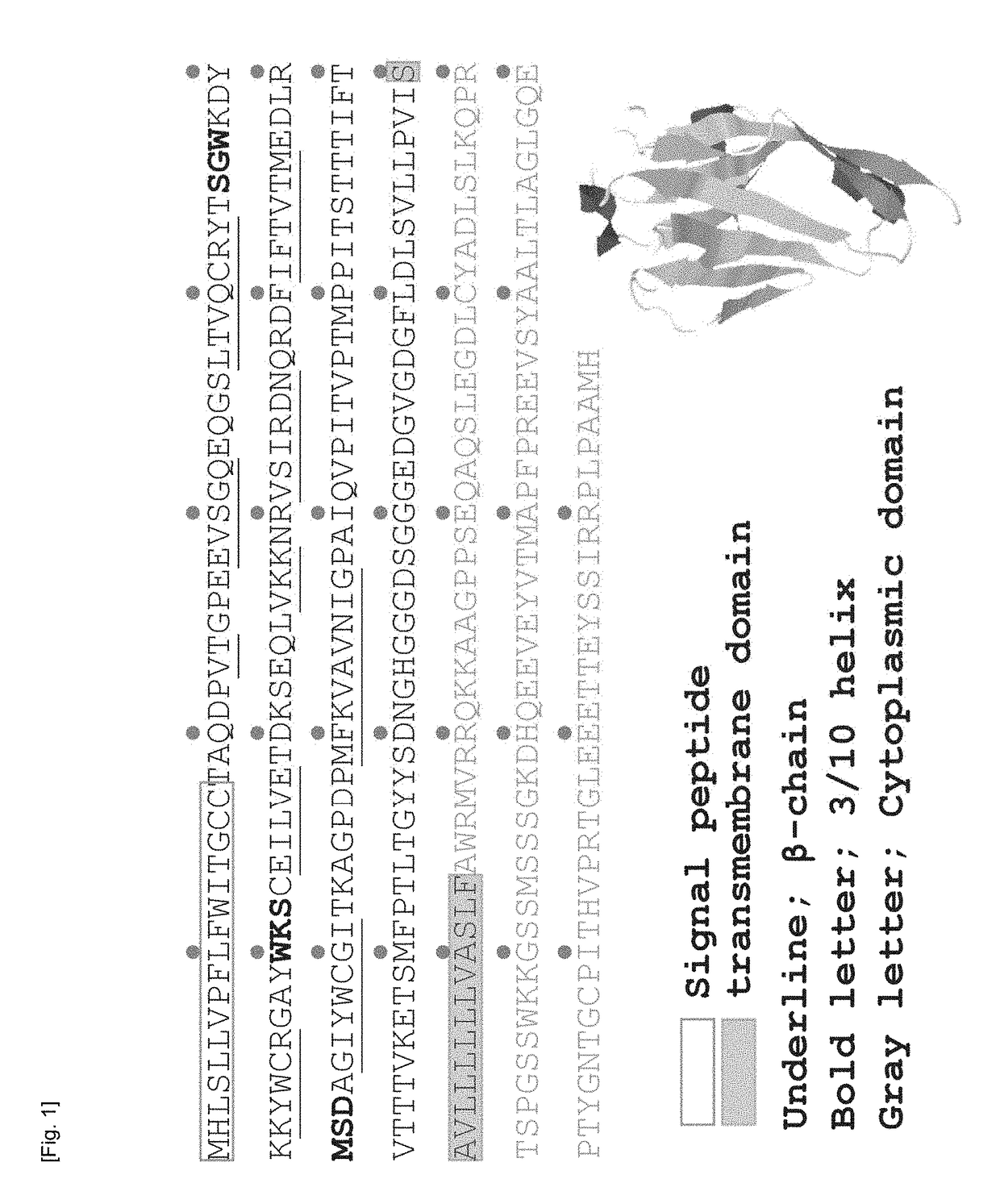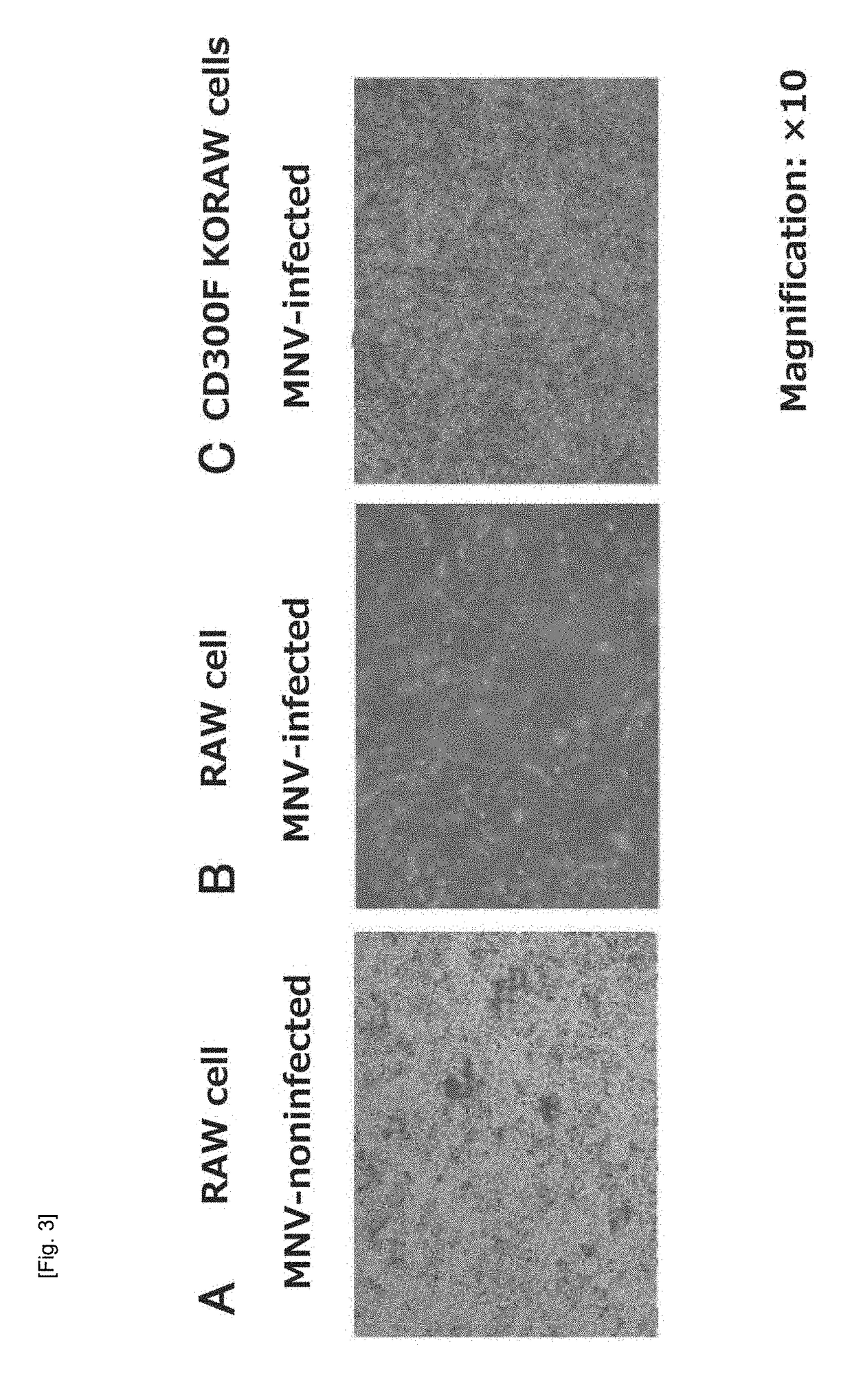Cultured transgenic cell allowing growth of norovirus, and use thereof
a transgenic cell and norovirus technology, applied in the field of virus growth methods, can solve the problems of large-scale food poisoning incidents, food poisoning, and symptoms of infectious gastroenteritis
- Summary
- Abstract
- Description
- Claims
- Application Information
AI Technical Summary
Benefits of technology
Problems solved by technology
Method used
Image
Examples
Embodiment Construction
[0057]An embodiment of the present invention will next be described by way of Examples.
[0058][1] Identification of MNV-specific receptor
[0059]An MNV-specific receptor was identified by use of MNV that can be grown and cultured in RAW cells. FIG. 3 shows optical micrographs of RAW cells treated with MNV (magnification: ×10). MNV-non-infected and cultured RAW cells (FIG. 3A) were killed by infection with MNV (FIG. 3B). RAW cells were infected with the recombinant lentivirus of nucleotide sequence library capable of random knockout of the gene encoding the Cas9 enzyme and the mammalian cell gene having a guide RNA sequence recognized by Cas9, and the murine CD300F gene (CD3001f gene) knockout cells were infected with MNV-S7-PP3, to thereby prepare a surviving cell population (FIG. 3C). The surviving cells are viable cells regardless of MNV infection.
[0060]The MNV-S7-PP3 strain corresponds to MNV that was used for the construction of the MNV reverse genetics system as disclosed in Non-P...
PUM
| Property | Measurement | Unit |
|---|---|---|
| Structure | aaaaa | aaaaa |
Abstract
Description
Claims
Application Information
 Login to View More
Login to View More - R&D
- Intellectual Property
- Life Sciences
- Materials
- Tech Scout
- Unparalleled Data Quality
- Higher Quality Content
- 60% Fewer Hallucinations
Browse by: Latest US Patents, China's latest patents, Technical Efficacy Thesaurus, Application Domain, Technology Topic, Popular Technical Reports.
© 2025 PatSnap. All rights reserved.Legal|Privacy policy|Modern Slavery Act Transparency Statement|Sitemap|About US| Contact US: help@patsnap.com



